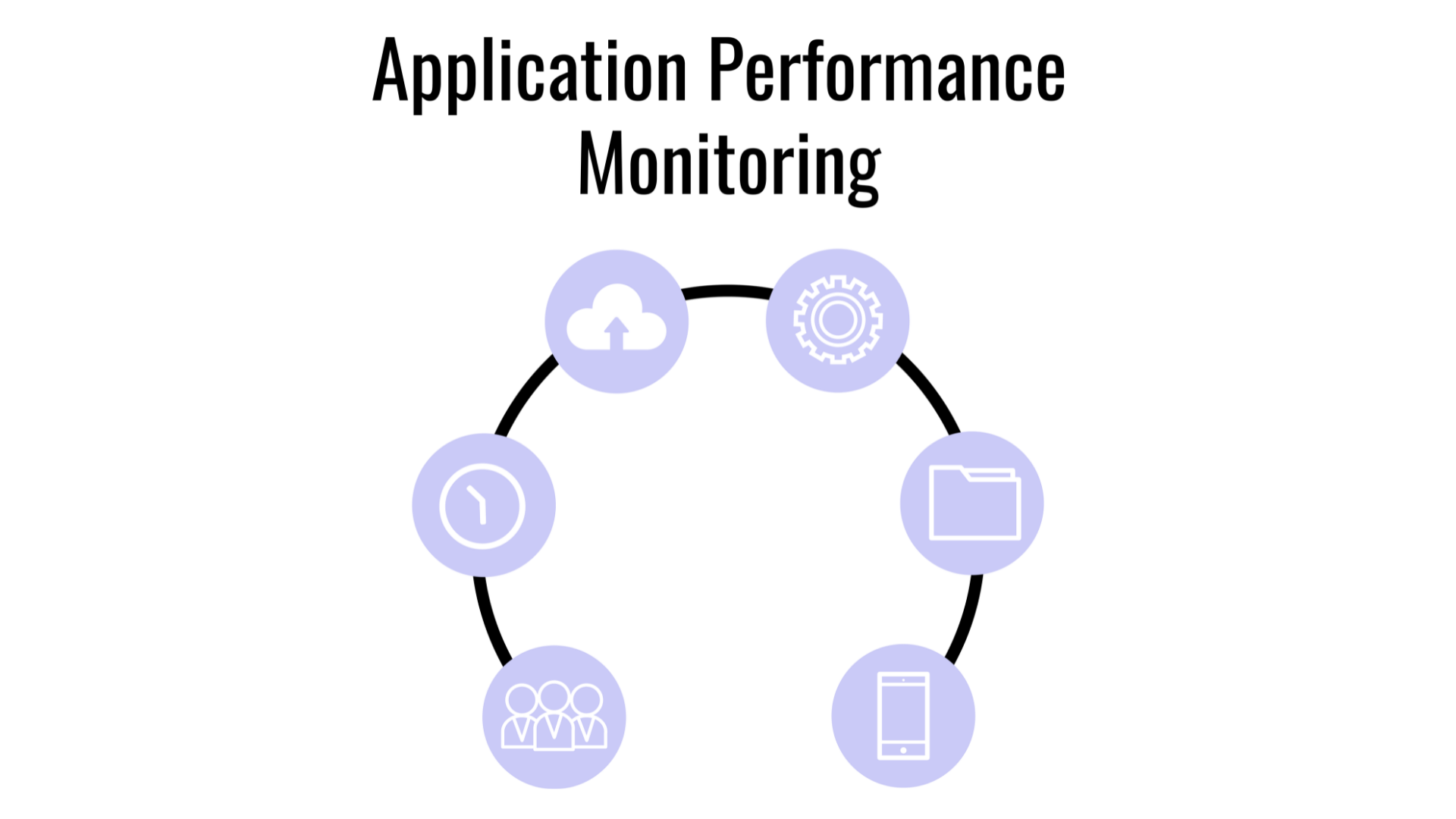The use of software has greatly eased our business transactions and overall experience in this digital era. However, the user journey is not always smooth. Companies continuously need to keep an eye out to ensure intended performance in their software packages. Because performance problems may result in negative user reviews and damage to a business’s reputation, corrective measures, including monitoring the application's performance around the clock, is crucial.
More importantly, the monitoring should be done from a customer’s perspective by keeping the end-user experience in mind. That is where application performance monitoring (APM) can play a vital role in your tech business.
So, what is application performance monitoring? And how should you use APM solutions to greatly improve your business outcomes?
Find out here:
Exploring APM: What is the main idea?

Application performance monitoring (APM) lets you oversee your applications while they’re in use. With APM, you can constantly monitor the performance of multiple applications to ensure smooth operation free of any unintended issues.
Performance issues may result in negative consequences for both the end-users and your business. APM lets you detect any functional issues through continuous monitoring and allows you time to make the software bug-free before the problem affects the users.
What are the key reasons for the use of APM?
Before getting down to the nitty-gritty of using application performance monitoring, let’s find out why you need it.
- End-user experience monitoring. You will track the type and frequency of any software bugs bothering the front-line users and customers.
- Usage data. APM solutions help you analyze the performance metrics and understand the usage pattern.
- Maximize ROI. Stakeholders of any business want to maximize the return on their investments. Understanding the usage pattern and application performance issues will help you make the best use of your software.

While we discuss application performance monitoring, another related term known as “application performance management” might pop up. Inherently, these two are different. Let’s see how.
Application performance management vs. monitoring: How do they differ?
You can think of application performance management as a wider and more holistic approach to supervising and managing the overall performance of your application. At the same time, monitoring is a portion of the overall management.
Performance management covers everything from coding, developing, and monitoring to the business transaction experience, usage, and user experience. In contrast, monitoring helps you locate the problem areas at any time. After problem identification, you can correct any performance issues through your broader performance management strategies.
In the remaining part of this article, we will focus primarily on performance monitoring aspects.
How does APM work?
Application performance monitoring (APM) primarily uses a set of metrics to measure the performance and behavior of an application. The system triggers an alert to notify the concerned personnel when it detects abnormalities.
Key metrics for APM
Typically, the application performance monitoring system uses quite a few key performance metrics to locate factors affecting app performance. Below, we have compiled a few of those for you to take a quick look at.
- Web performance monitoring helps you identify problem areas related to the speed of loading and preparing a page.
- CPU usage can detect issues that result from misuse of computer resources.
- Error rates tell you how many times the software fails during execution.
- Request rates indicate the level of traffic volume the application is dealing with, including any significant usage upsurges or declines.
- Customer satisfaction, being one of the most important indicators of user feedback, can define whether the software is serving its users as intended.
- Application availability indicates the application’s overall uptime and functionality as defined in the service level objectives (SLO).
- The number of occurrences finds out the number of ongoing operations at any given time.
Since we are now familiar with the key APM metrics, how should we use them? That’s where the APM approaches come in. Let’s look into those as well.
Approaches to using APM
Application performance monitoring takes several approaches depending on the type and use of the tracking application. Take a look below to find some of the most common approaches:
Application metrics-based monitoring
Also known as digital user experience monitoring, it closely follows the user experience to identify problems such as errors, increased response time, or system failure. There are two distinct methods of metric-based application monitoring:
- Synthetic monitoring tracks user experience data from several varying locations in a proactive manner.
- Real user monitoring continuously tracks application data at all times.
Code-level performance-based monitoring
Developers can often detect problems with coding through transaction profiling at all levels of operations. By analyzing the nature of business transactions with unusually long execution times, problematic coding can be traced quickly and effectively.
Network-based monitoring
Also referred to as infrastructure visibility from the app performance perspective, network monitoring can help identify network connectivity problems, memory leakage, virtualization bottlenecks, and similar drawbacks. Observing the runtime application architecture thus helps mitigate any performance issues.

Now that we have covered the basic ideas of application performance monitoring (APM), let’s explore how you can implement it in your business.
How to find the optimal APM solution
Choosing the wrong APM solution will cost you organizational resources. To find the right one, take a look at the criteria and qualities listed below. If your chosen app performance monitoring solution has these characteristics, it will help maximize your ROI.
- Ability to differentiate the requests you make through filtering your queries
- Ability to track code-level performance to point out how time is spent during execution or requests
- Custom instrumentation to generate events based on your query, language preference, and application architecture
- Ability to track the end-user experience as it happens throughout the entire infrastructure
- Using artificial intelligence for comprehensive infrastructure monitoring
- Ability to sync the application’s behavior with your business outcomes
Does it sound a bit overwhelming to look for that many qualities while choosing the right APM solution? Check out the available assistant option.
Geniusee is a custom software and product development company aiming to help FinTech, EdTech, and other businesses worldwide thrive through tech partnerships. We have multiple experts with all the necessary skill sets and certifications to offer you a fully customized APM solution for your company. Geniusee possesses all the supporting infrastructure to provide you with 24/7 application performance monitoring support.
Now let’s look at the features of a few widely used application performance monitoring tools you can use.
Application performance monitoring tools
There are many APM tools available in the market. They differ in functionalities and suitabilities. Here we have listed a few prominent APM tools for you to consider.
TraceView
With native support for Java, .NET, Ruby, Python, and PHP, TraceView from SolarWinds is suitable for monitoring SaaS and web applications with comprehensive monitoring abilities at the code level. It employs real user monitoring to detect and fix any problematic issues in your system. Cost-effectiveness and user-centric operations are among the distinct advantages of TraceView.
Dell Foglight
With built-in support for Java, AJAX, and .NET among other languages, Dell Foglight is highly specialized in monitoring the performance of storage platforms and large databases. It consistently tracks user interactions to measure the app’s well-being. The user-friendly APM tool boasts several analytical dashboards and the ability to cross-map a database with an application to deliver a great digital experience.
Stackify Retrace
The popular APM tool Retrace from Stackify has a solid customer base of nearly a thousand companies consisting of both SMEs and large organizations — Honeywell, Microsoft, and Xerox, to name a few. One key reason behind the popularity is its usability in various environments and integration support with other tools. It measures performance by collecting all relevant metrics from different application packages.
Wrapping up
It’s easy for enterprises to lose sight of an application’s proper role — to serve the business. Make APM a driver of stable business operations, and you’ll be surprised. With APM solutions, approaches and tools, you can provide application monitoring and understand how customers are being served, where they are struggling, or why parts of the business aren't working as expected.
Still, have doubts about choosing the proper application performance monitoring (APM) solution? Feel free to reach out and see what options the professional and certified IT teams at Geniusee can offer you.





















